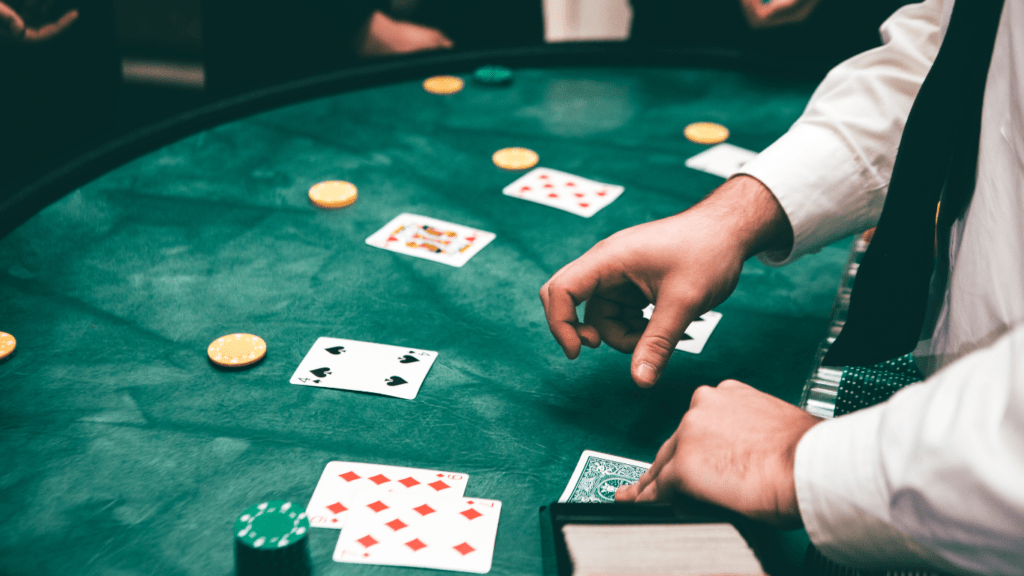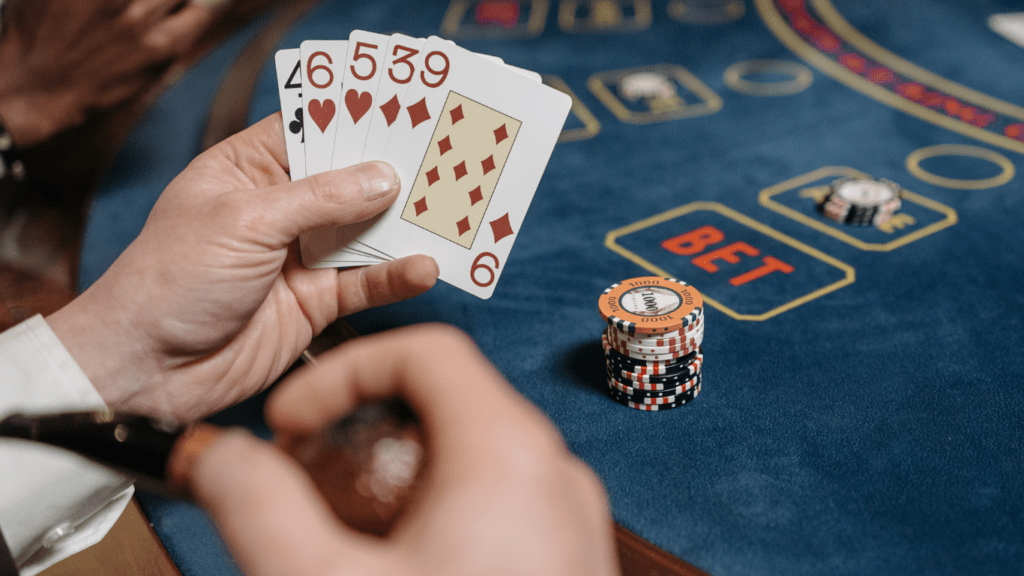Understanding the Basics of Blackjack
Blackjack starts with the goal of having a hand totaling closer to 21 than the dealer’s. Each player competes against the dealer, not other players. Cards 2 through 10 are worth face value, face cards count as 10, and aces can be 1 or 11, depending on the hand’s needs.
The game begins when players receive two cards. The dealer also gets two cards but shows only one. Players decide to “hit” (take another card) or “stand” (keep their current hand). If the hand exceeds 21, it’s a bust, resulting in a loss. The dealer follows specific rules, hitting until they reach at least 17.
Understanding basic strategy involves knowing when to make each decision correctly. For example, always hit on a hand of 8 or less and generally stand on 17 or higher. These strategies help reduce the house edge and increase your odds of winning.
Key Elements of Basic Strategy
Mastering basic blackjack strategy dramatically reduces the house edge. Key elements include deciding when to hit, stand, double down, split pairs, and surrender.
When to Hit and Stand
Strategic decisions about hitting or standing can significantly impact your success. Always hit with a hand of 8 or less. Stand when your total is 17 or higher. The middle range, especially with totals between 12 and 16, warrants more cautious decisions. If the dealer shows a 7 or higher, hitting is usually better, while standing is safer when the dealer shows 6 or lower.
Understanding Doubling Down
Doubling down offers an opportunity to increase your bet when the odds are in your favor. Opt to double down on a starting hand total of 10 or 11 if the dealer shows a card between 2 and 9. This move capitalizes on favorable conditions, maximizing potential gains. However, avoid doubling down if you’re facing a high dealer card like a 10 or Ace.
When to Split Pairs
Splitting pairs enables players to create two potential winning hands. Always split aces and eights for the best chance of improving your position. Avoid splitting tens and face cards since these hands already total 20, a strong position against the dealer. Be strategic with other pairs, considering the dealer’s visible card to decide if splitting is advantageous.
The Role of Surrender
Surrender provides an opportunity to minimize losses in unfavorable situations. Use surrender when you portray a weak hand, like a 15 or 16, against a dealer’s 9, 10, or Ace. By forfeiting half of your bet, you save overall bankroll, reducing potential losses. However, not all casinos offer surrender, so verify the availability of this option before planning your strategy.
Importance of the Dealer’s Upcard

In blackjack, understanding the dealer’s upcard is critical for strategic decisions. The dealer’s visible card significantly influences a player’s choice to hit, stand, double down, or split. A weak dealer upcard, like 2 through 6, suggests a higher chance of dealer busting.
In these cases, standing on a total of 12 or higher, and potentially doubling down on hard 9 through 11, leverages the dealer’s weak position.
Conversely, a strong upcard, such as 7 through ace, signals a cautious approach. In such instances, hitting with hands up to 16 may prevent a bust if the dealer forms a strong hand. Employing these tactics reduces the house edge and enhances gameplay. Understanding these strategies can make the difference between a successful hand and a costly mistake.
Common Mistakes to Avoid
- Overestimating the House Edge: Players often underestimate the built-in advantage the casino holds over them. While basic strategy reduces the house edge, it doesn’t eliminate it. Ignoring this can lead to risky bets.
- Neglecting Basic Strategy: Deviating from the basic strategy is a frequent pitfall. Many players rely on intuition or guesswork, but following a proven strategy is crucial for maintaining lower house advantages.
- Misunderstanding the Dealer’s Upcard: Failing to interpret the dealer’s visible card can hinder your decisions. A weak upcard indicates potential dealer busts, urging players to stand or double down on strong hands. Ignoring these cues results in missed opportunities.
- Incorrect Splitting: Splitting pairs like tens or ignoring the need to split aces and eights is a common blunder. Proper splitting based on basic strategy maximizes profit and minimizes losses.
- Emotional Betting: Letting emotions dictate your bets often leads to poor decision-making. Sticking to a clear strategy helps maintain discipline and focus.
- Overlooking Bankroll Management: Betting too much too soon quickly depletes funds. Effective bankroll management ensures longer playtime and strategic consistency.
Tools and Resources for Mastering Strategy
Mastering basic blackjack strategy requires the right tools and resources. Identifying these can significantly impact your learning curve and game performance.
- Strategy Cards: These provide players with quick access to optimal moves based on their hand and the dealer’s upcard. I keep a basic strategy card handy, which outlines when to hit, stand, double down, and split pairs.
- Blackjack Simulators: Many online platforms offer simulation tools for practice without financial risk. I’ve found that using simulators helps hone decision-making by replicating real gameplay scenarios.
- Books and Guides: Renowned authors like Edward O. Thorp with his book “Beat the Dealer” offer in-depth insights. Books provide a solid foundation in understanding strategies and house edge reduction.
- Online Forums and Communities: Participating in blackjack forums allows me to exchange strategies with fellow players. These communities often discuss the latest trends and share valuable tips on tricky scenarios.
- Apps and Software: Mobile apps and software dedicated to blackjack strategy enable practice on the go. I’ve used several apps that simulate games and provide feedback on decisions to enhance my skills continuously.
Utilizing these tools helps reinforce key strategies, ensuring practice under various conditions to improve overall gameplay and strategy comprehension.



 Senior Gambling Analyst
Ingrid Cox is the Senior Gambling Analyst at Dice Gamblers Deal, responsible for providing deep, data-driven insights into the strategies and odds behind various casino games. With a background in mathematics and statistical analysis, Ingrid brings a scientific approach to her role, offering players accurate and well-researched information on everything from blackjack hand probabilities to optimal roulette betting strategies. Ingrid's expertise allows her to break down the complex odds of gambling games, offering readers tools to better understand their chances and improve their strategies. Her work focuses not only on the numbers behind the games but also on trends within the gambling world, helping players stay ahead of the curve. Ingrid’s ability to translate difficult concepts into understandable strategies makes her a trusted authority for both beginners and seasoned gamblers looking to enhance their skills.
Senior Gambling Analyst
Ingrid Cox is the Senior Gambling Analyst at Dice Gamblers Deal, responsible for providing deep, data-driven insights into the strategies and odds behind various casino games. With a background in mathematics and statistical analysis, Ingrid brings a scientific approach to her role, offering players accurate and well-researched information on everything from blackjack hand probabilities to optimal roulette betting strategies. Ingrid's expertise allows her to break down the complex odds of gambling games, offering readers tools to better understand their chances and improve their strategies. Her work focuses not only on the numbers behind the games but also on trends within the gambling world, helping players stay ahead of the curve. Ingrid’s ability to translate difficult concepts into understandable strategies makes her a trusted authority for both beginners and seasoned gamblers looking to enhance their skills.
